Слайд 3Definitions and examples
Euler (1707 – 1783) was born in Switzerland and spent

most of his long life in Russia (St Petersburg) and Prussia (Berlin).
He was the most prolific mathematician of all time, his collected works filling more than 70 volumes.
Слайд 4Definitions and examples
Like many of the very great mathematicians of his era,

Euler contributed to almost every branch of pure and applied mathematics.
He is also responsible, more than any other person, for much of the mathematical notation in use today.
Слайд 5Definitions and examples
What is a ‘graph’? Intuitively, a graph is simply a

collection of points, called ‘vertices’, and a collection of lines, called ‘edges’, each of which joins either a pair of points or a single point to itself.
A familiar example, which serves as a useful analogy, is a road map which shows towns as vertices and the roads joining them as edges.
Слайд 11Definitions and examples
Definition 2
The degree sequence of a graph is the sequence

of its vertex degrees arranged in non-decreasing order.
Слайд 14Definitions and examples
The degrees of the four vertices are given in the
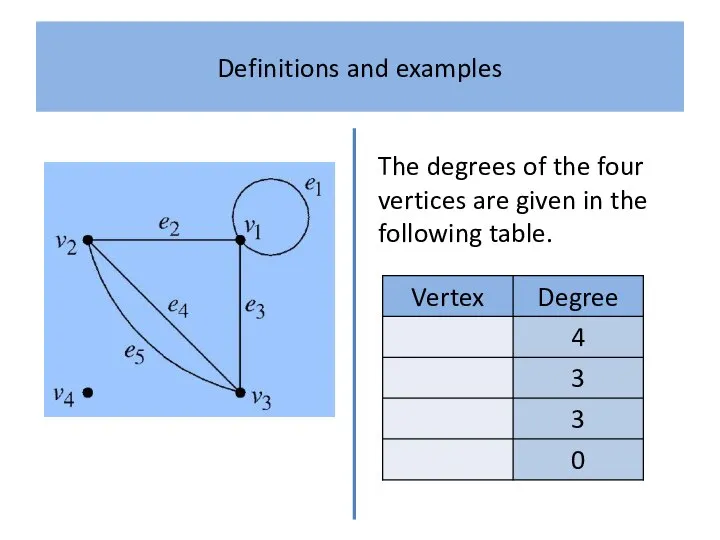
following table.
Слайд 16Definitions and examples
A well known 3-regular simple graph is Peterson’s graph. Two
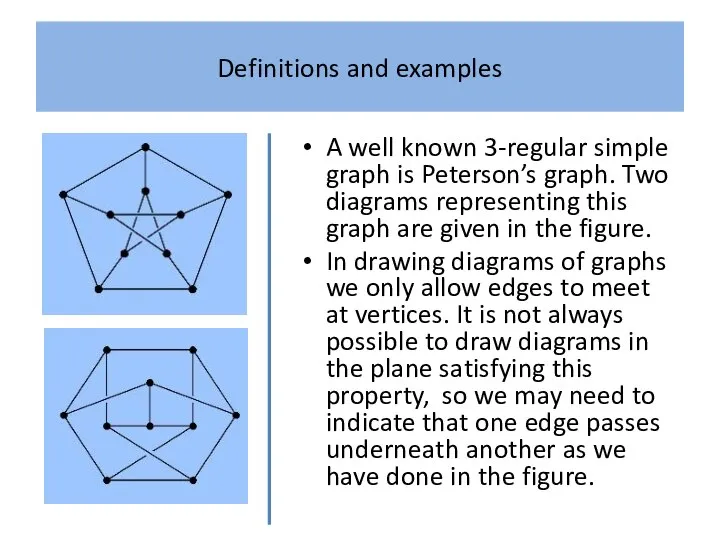
diagrams representing this graph are given in the figure.
In drawing diagrams of graphs we only allow edges to meet at vertices. It is not always possible to draw diagrams in the plane satisfying this property, so we may need to indicate that one edge passes underneath another as we have done in the figure.
Слайд 18Definitions and examples
Example 1
Since a complete graph is simple there are no
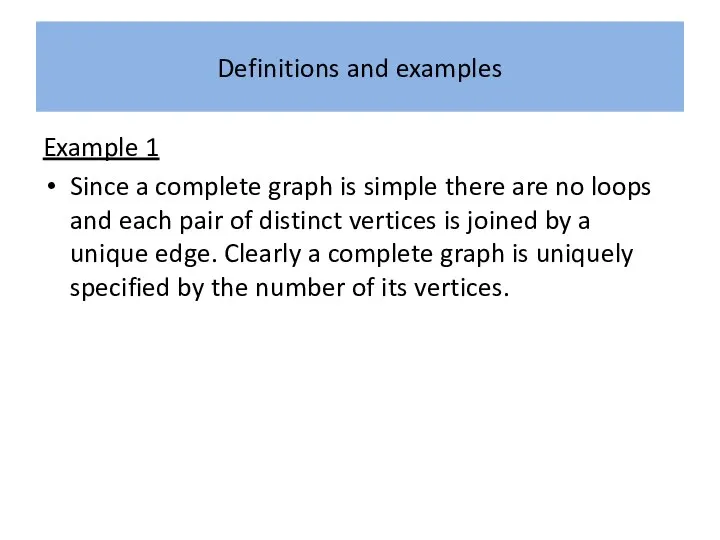
loops and each pair of distinct vertices is joined by a unique edge. Clearly a complete graph is uniquely specified by the number of its vertices.
Слайд 20Definitions and examples
Example 1
The complete graphs with three, four and five vertices
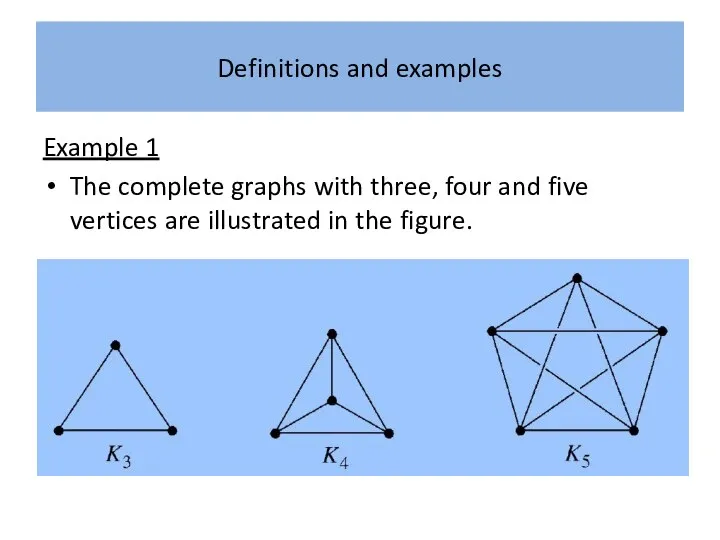
are illustrated in the figure.
Слайд 32Definitions and examples
Example 4
A complete graph has adjacency matrix with zeros along
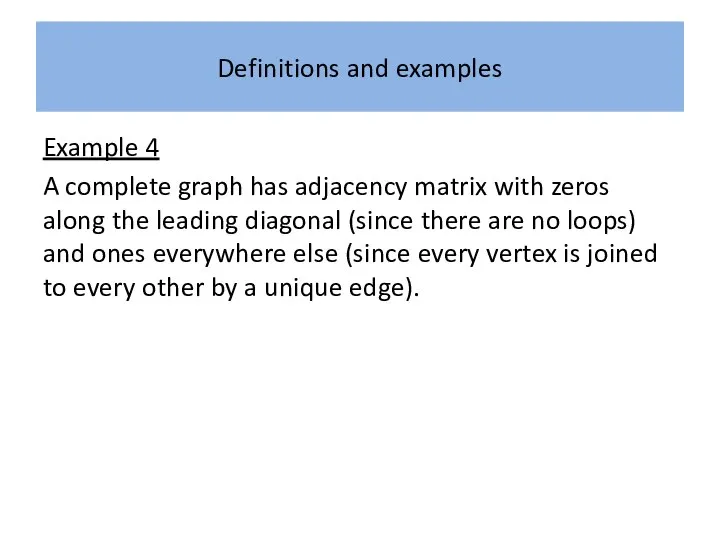
the leading diagonal (since there are no loops) and ones everywhere else (since every vertex is joined to every other by a unique edge).
Слайд 35Paths and cycles
Using the analogy of a road map, we can consider
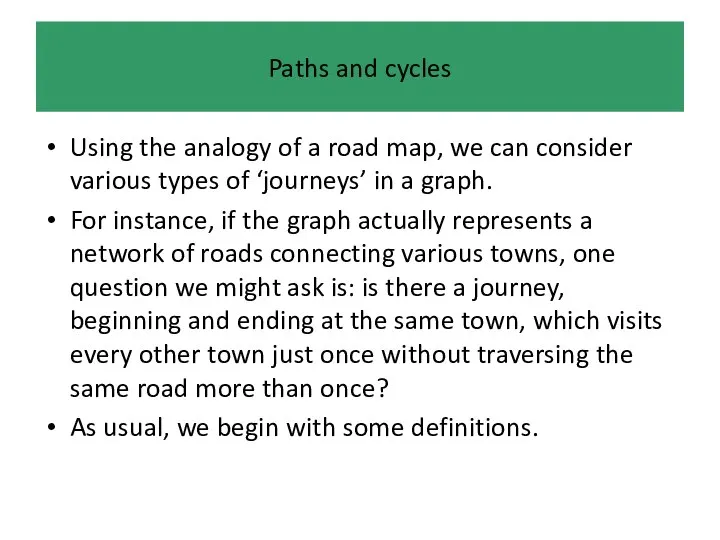
various types of ‘journeys’ in a graph.
For instance, if the graph actually represents a network of roads connecting various towns, one question we might ask is: is there a journey, beginning and ending at the same town, which visits every other town just once without traversing the same road more than once?
As usual, we begin with some definitions.
Слайд 39Paths and cycles
An edge sequence is any finite sequence of edges which
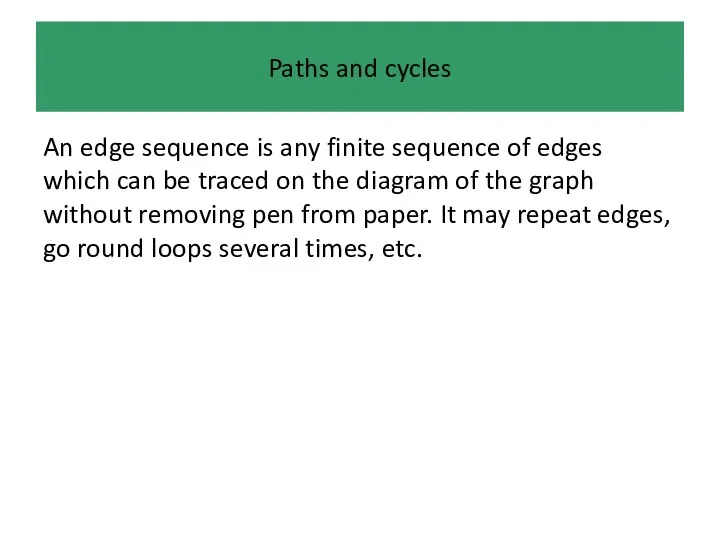
can be traced on the diagram of the graph without removing pen from paper. It may repeat edges, go round loops several times, etc.
Слайд 40Paths and cycles
Edge sequences are too general to be of very much
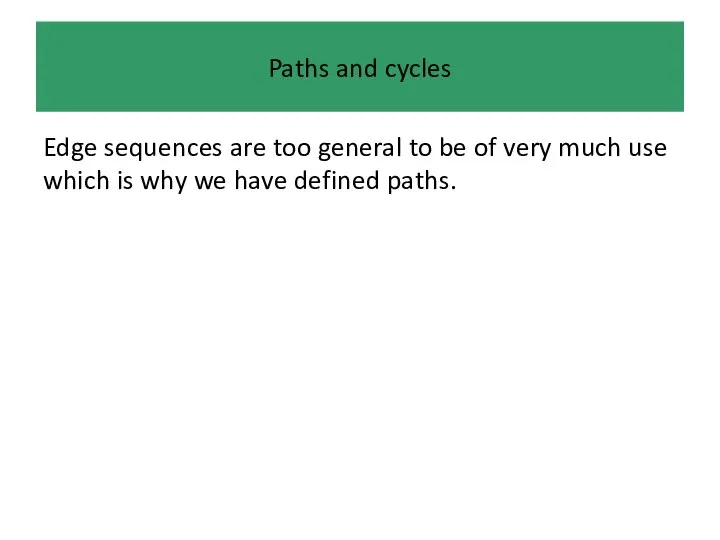
use which is why we have defined paths.
Слайд 41Paths and cycles
In a path we are not allowed to ‘travel along’
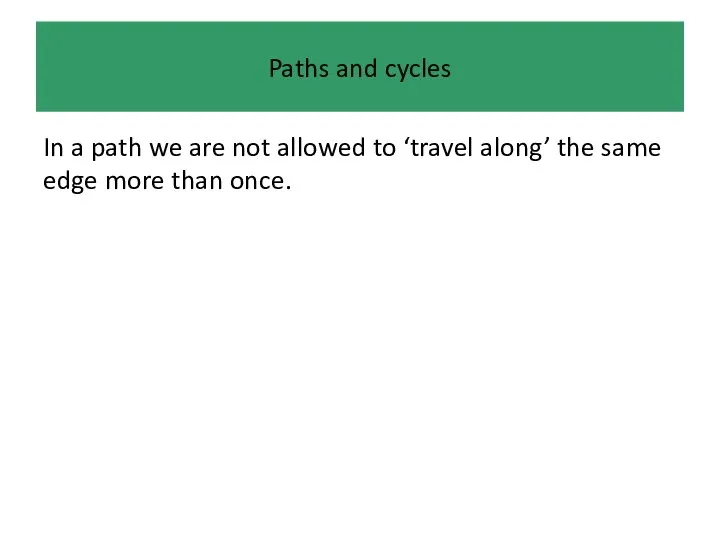
the same edge more than once.
Слайд 42Paths and cycles
If, in addition, we do not ‘visit’ the same vertex
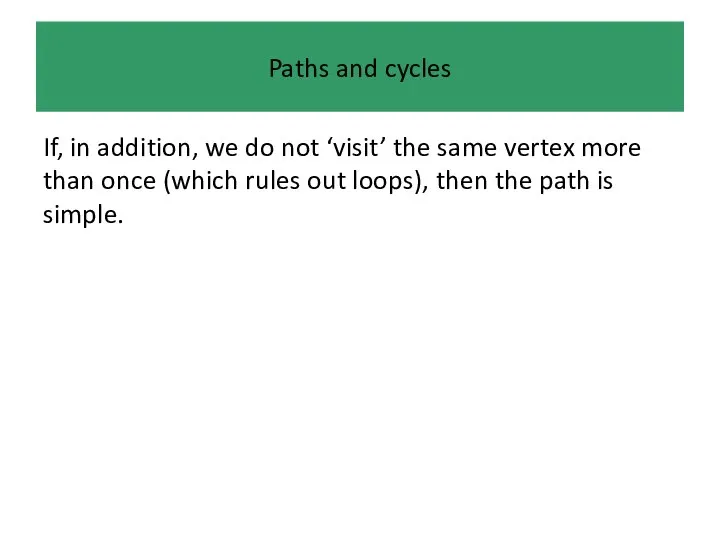
more than once (which rules out loops), then the path is simple.
Слайд 43Paths and cycles
The edge sequence or path is closed if we begin
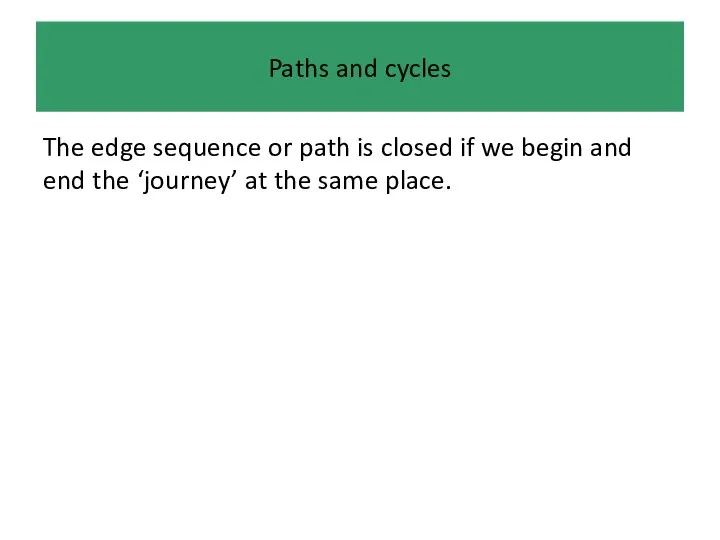
and end the ‘journey’ at the same place.
Слайд 50Paths and cycles
In an intuitively obvious sense, some graphs are ‘all in
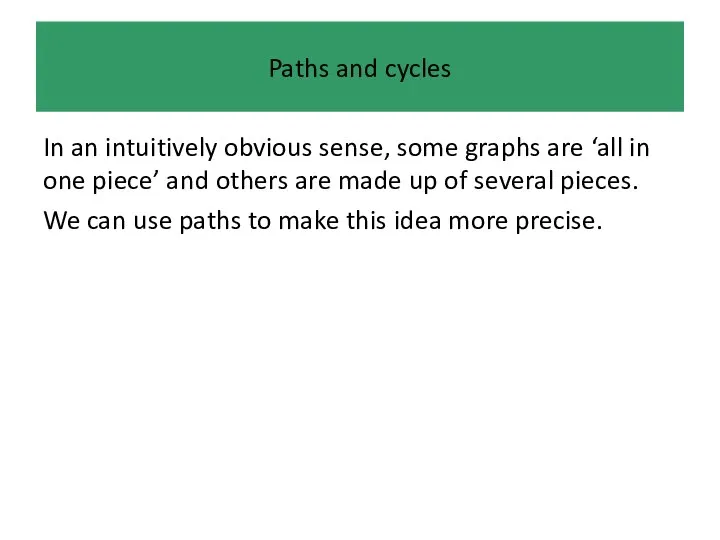
one piece’ and others are made up of several pieces.
We can use paths to make this idea more precise.
Слайд 51Paths and cycles
Definition 7
A graph is connected if, given any pair of
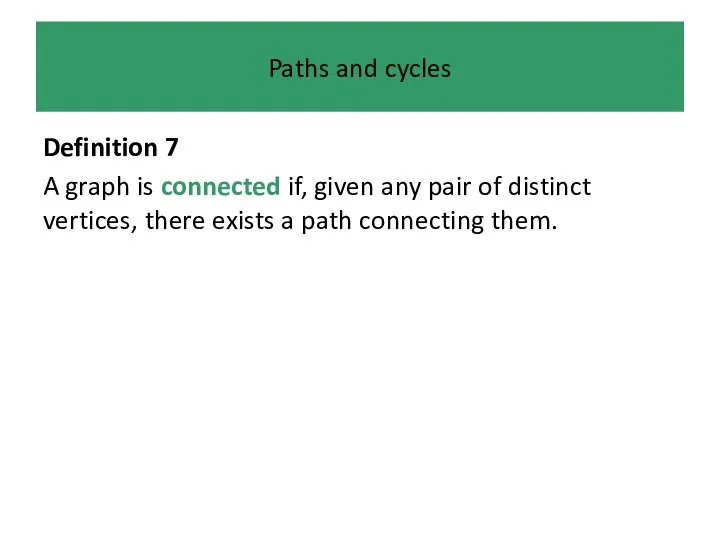
distinct vertices, there exists a path connecting them.
Слайд 52Paths and cycles
An arbitrary graph naturally splits up into a number of
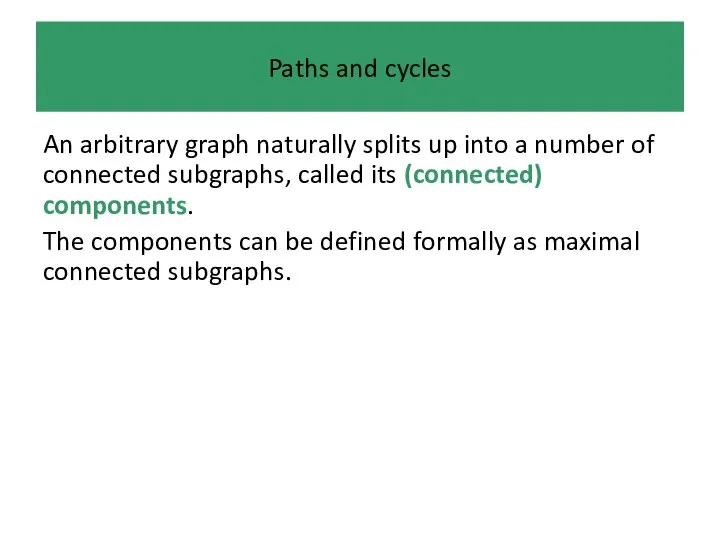
connected subgraphs, called its (connected) components.
The components can be defined formally as maximal connected subgraphs.
Слайд 54Paths and cycles
The components of a graph are just its connected ‘pieces’.
In
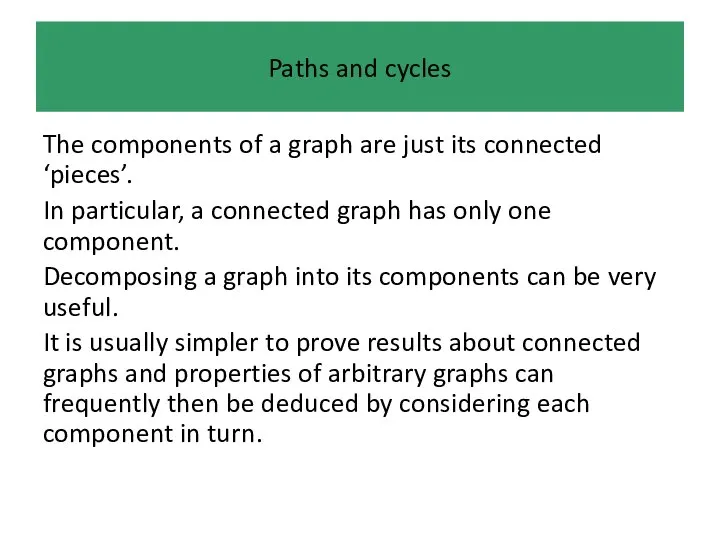
particular, a connected graph has only one component.
Decomposing a graph into its components can be very useful.
It is usually simpler to prove results about connected graphs and properties of arbitrary graphs can frequently then be deduced by considering each component in turn.











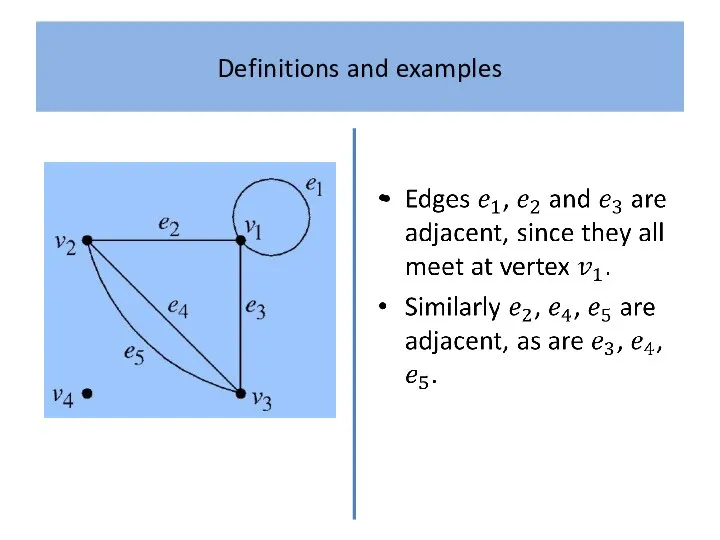

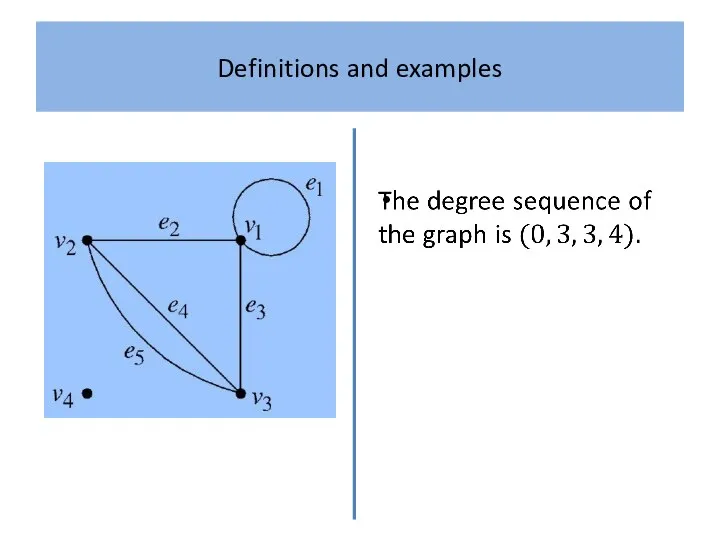

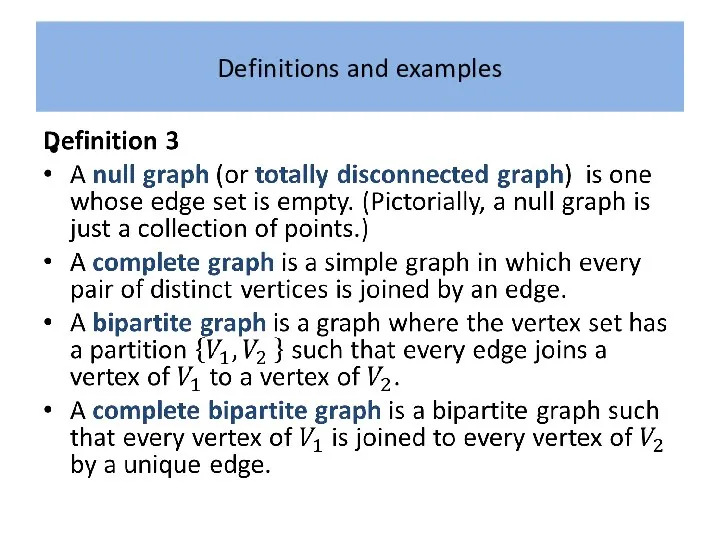

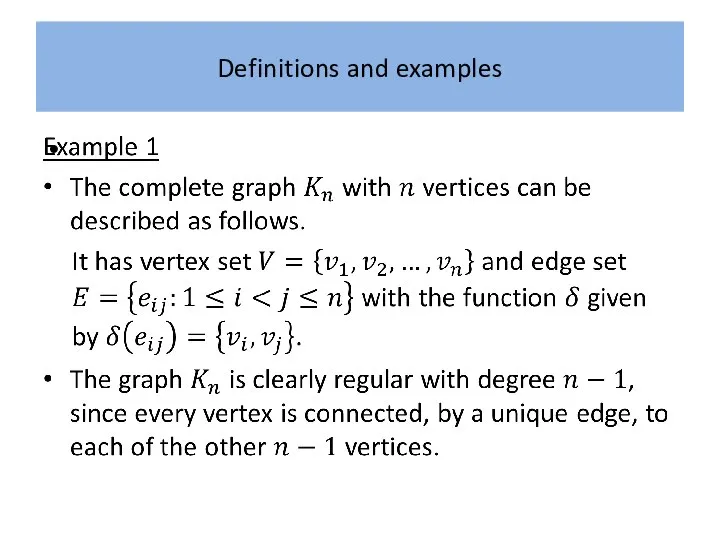

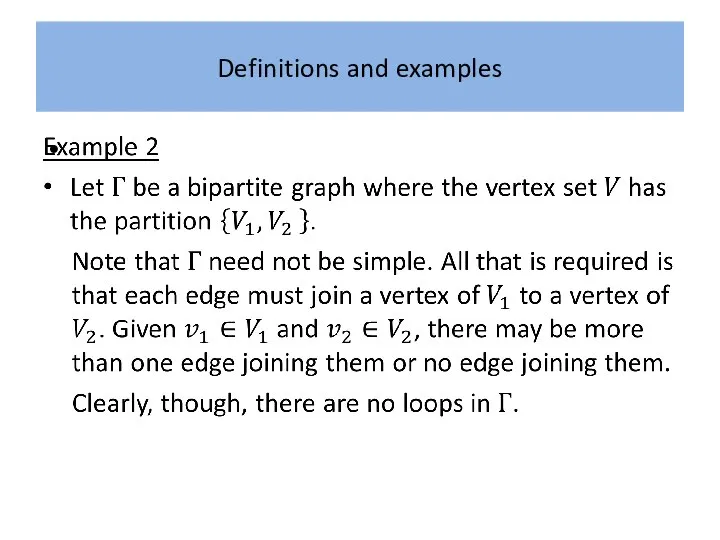
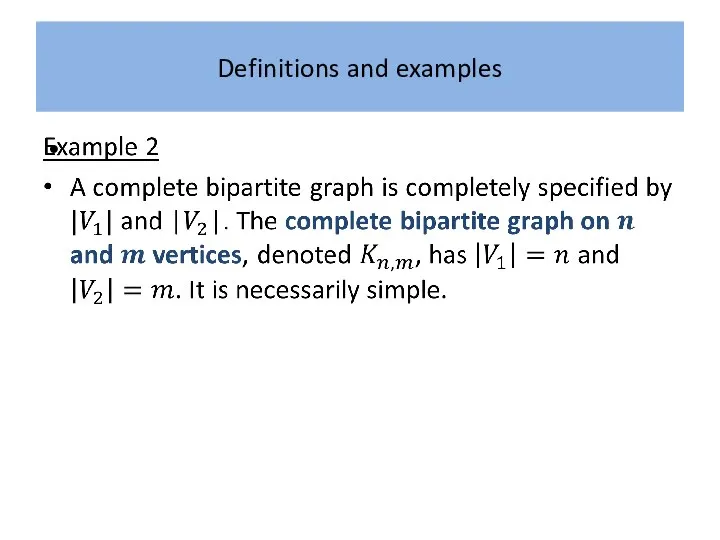
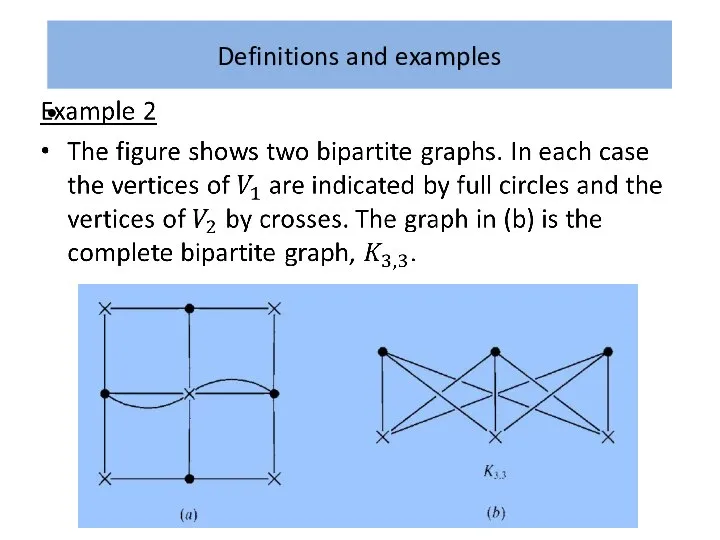
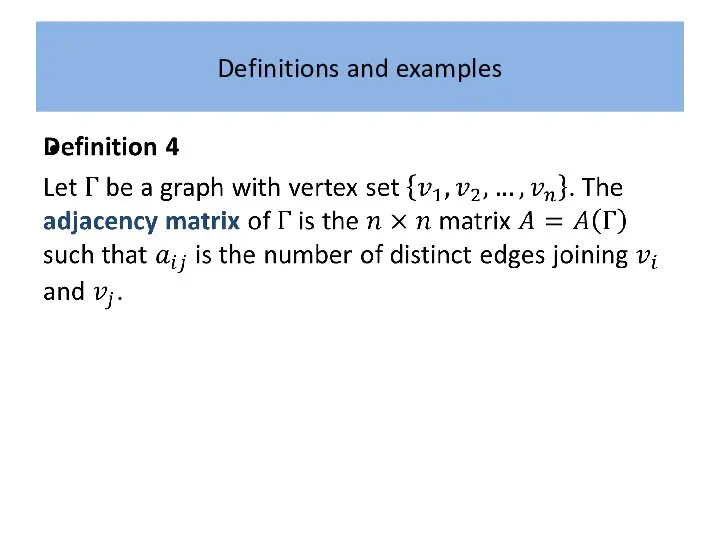
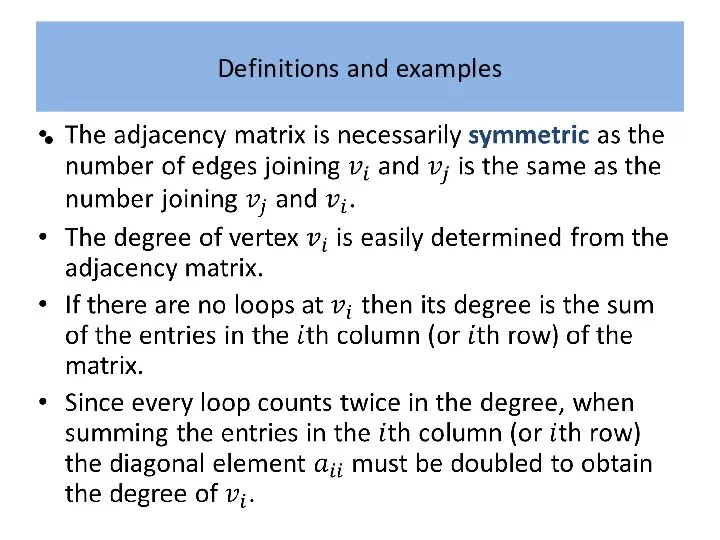
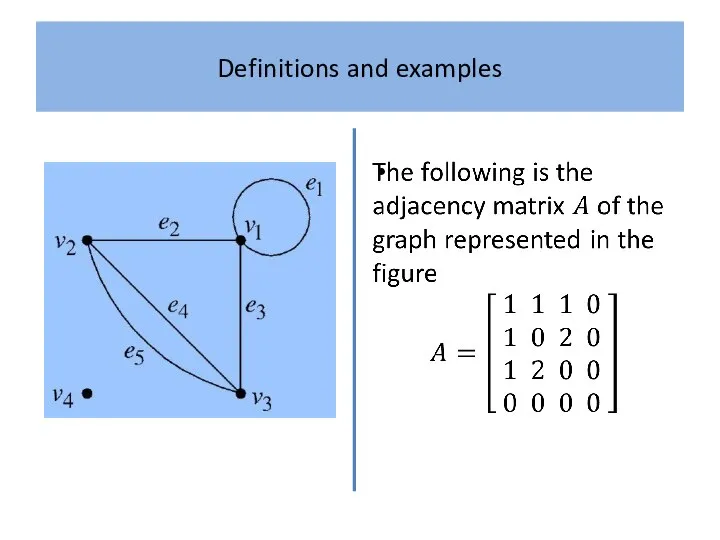
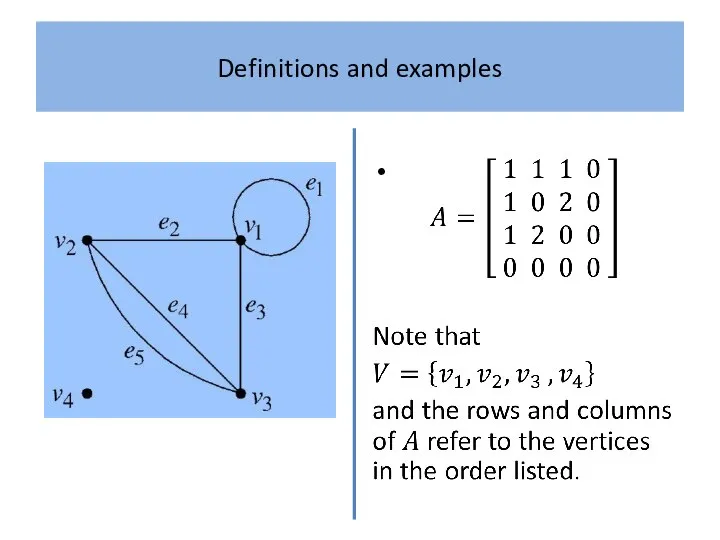
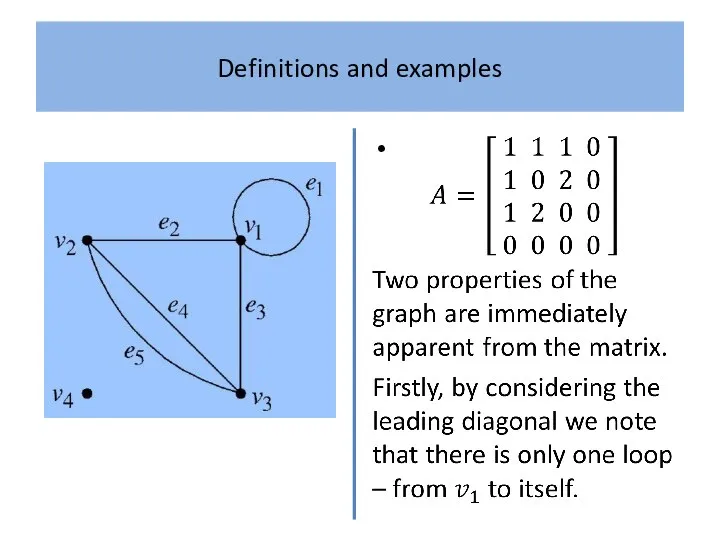
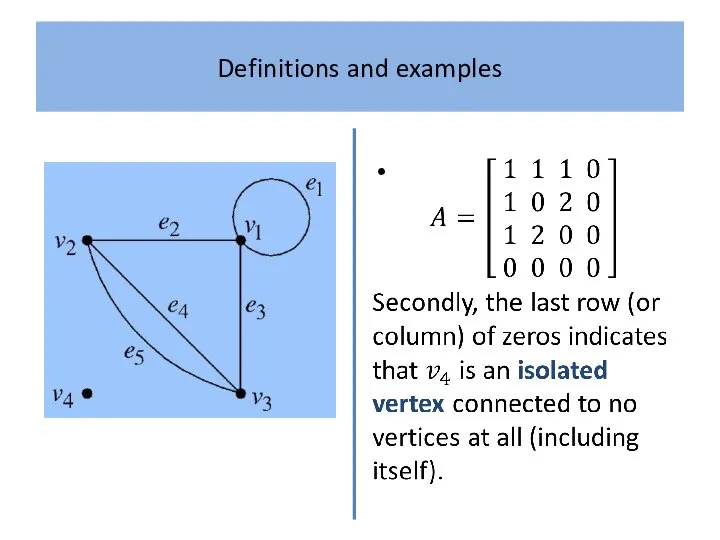
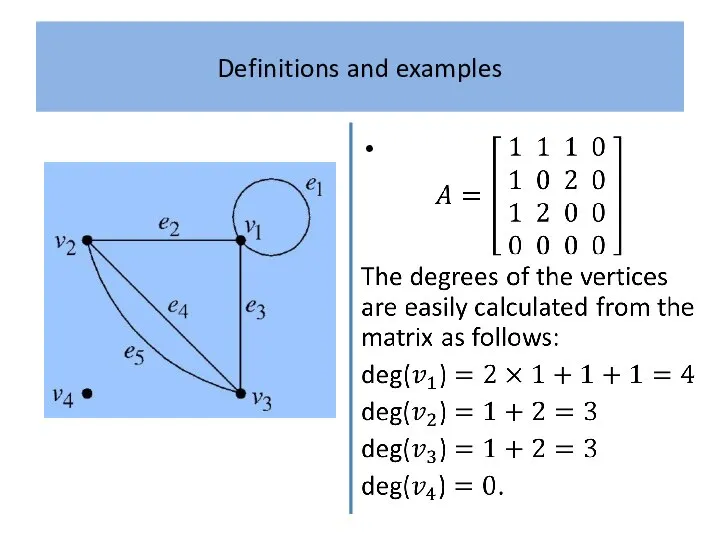
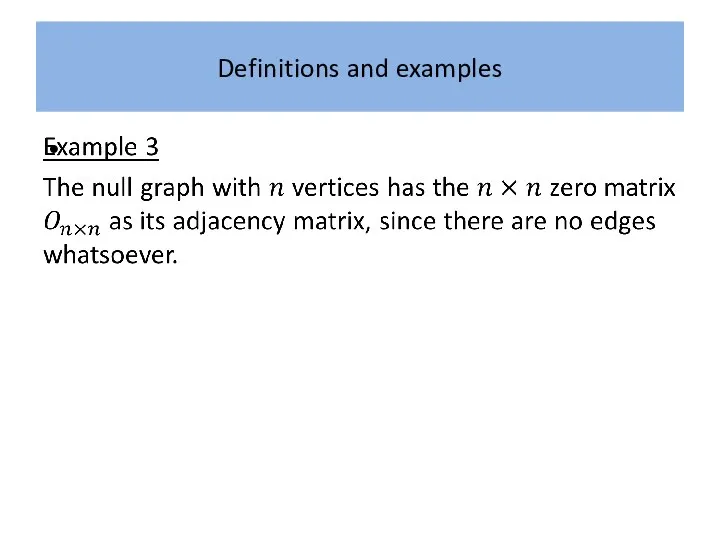

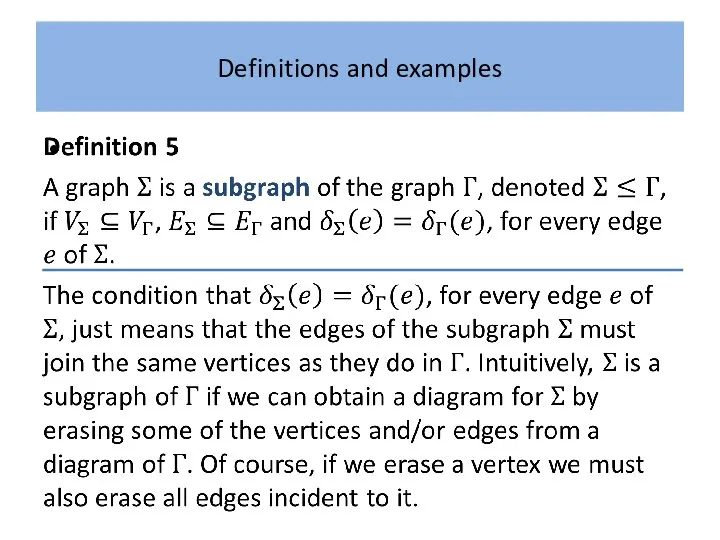
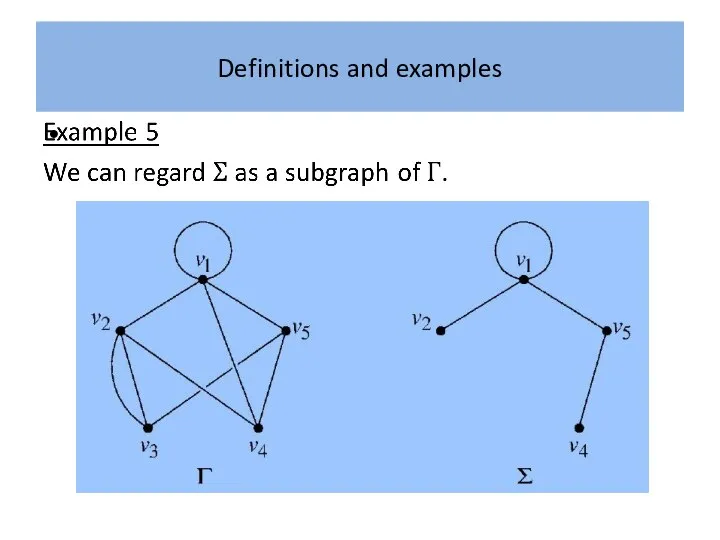

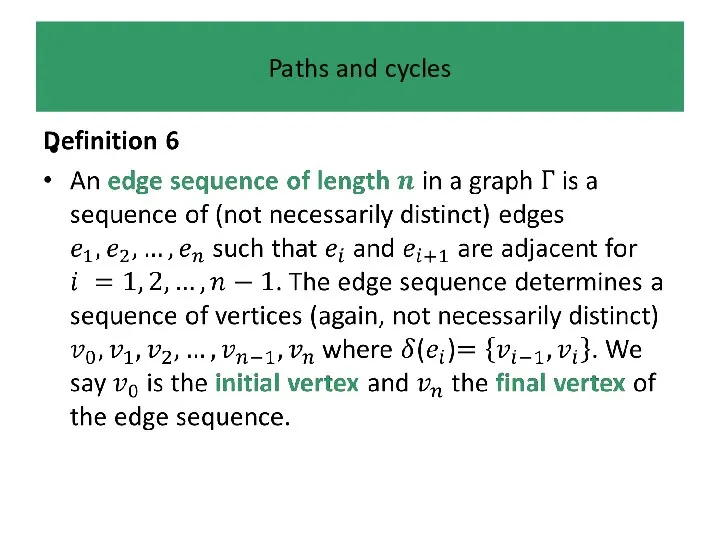
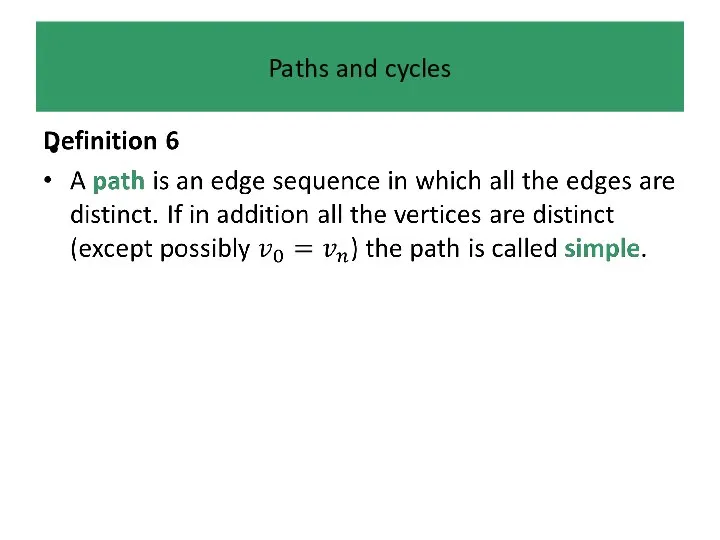
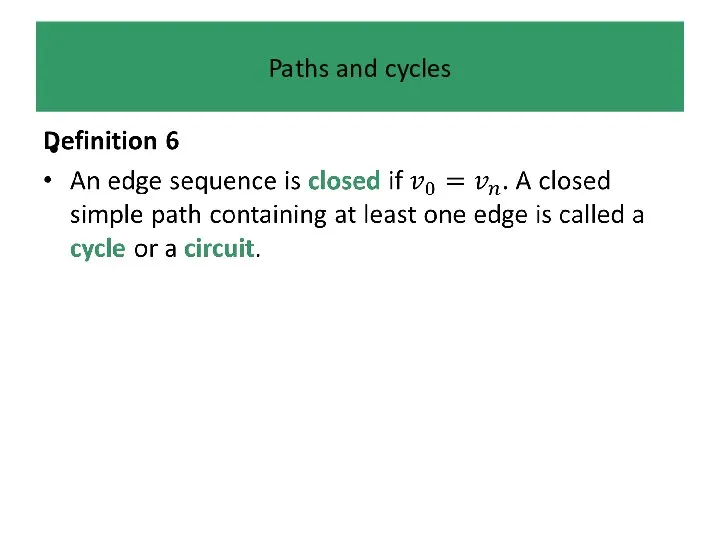





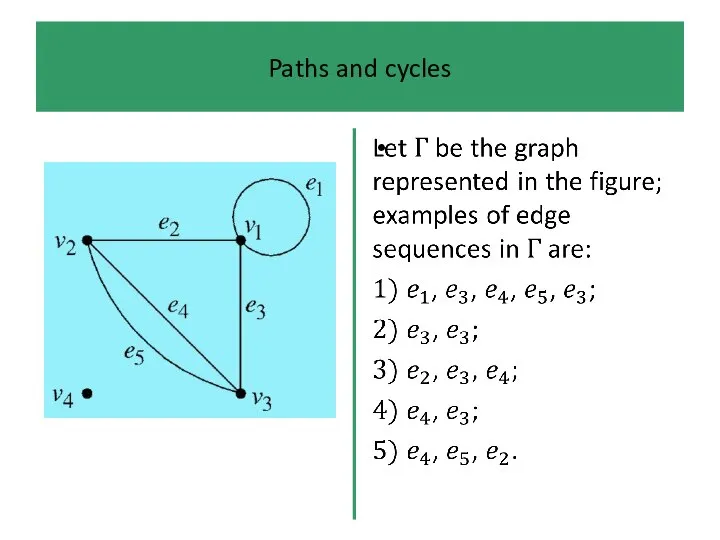
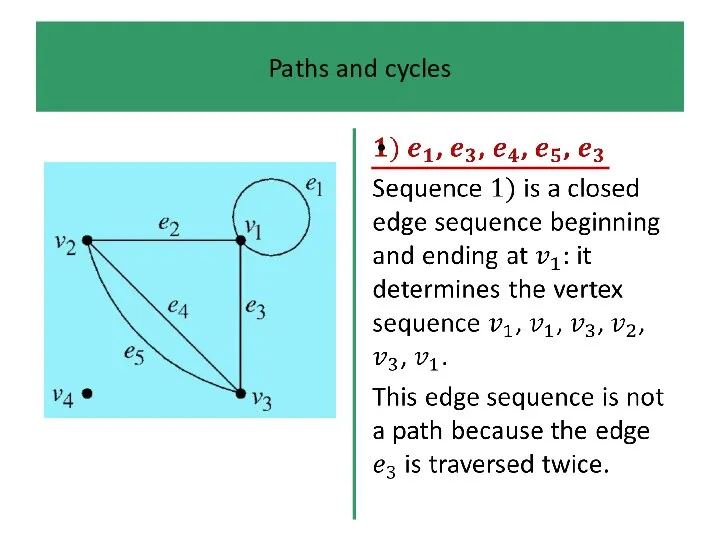
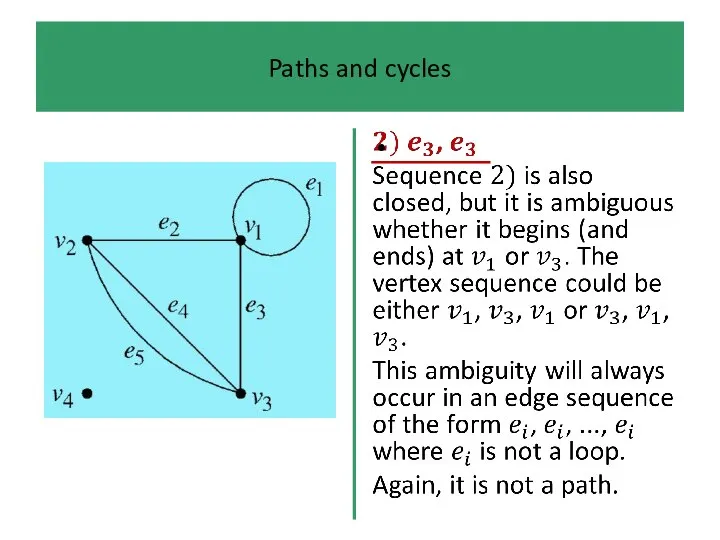
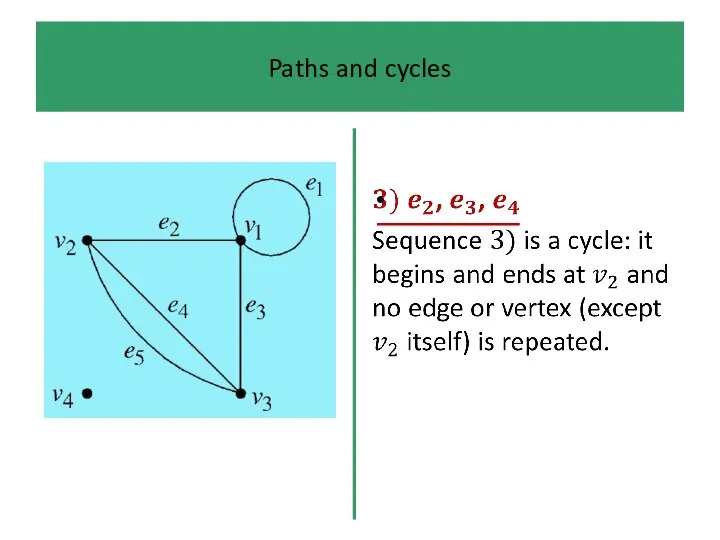
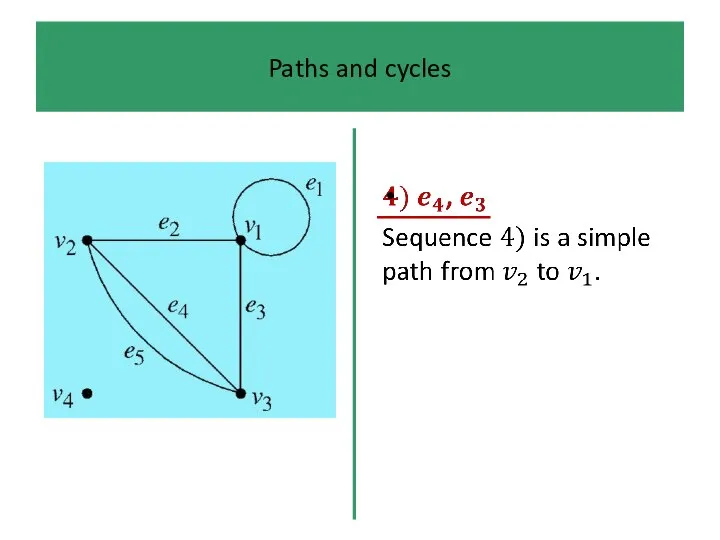
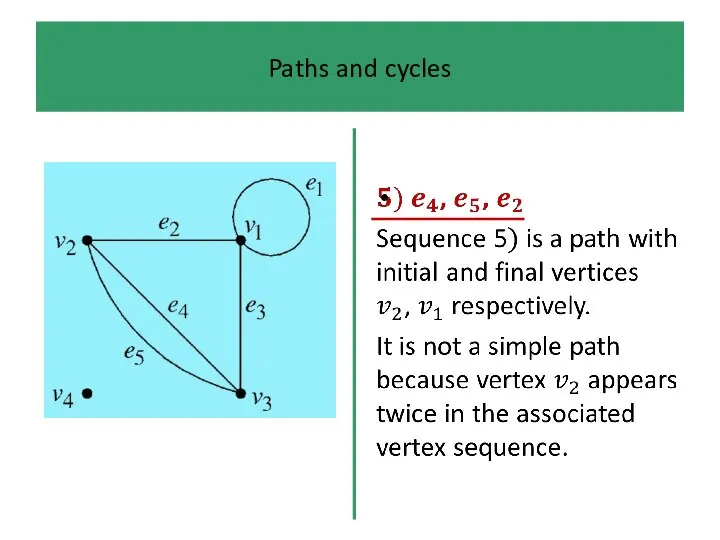



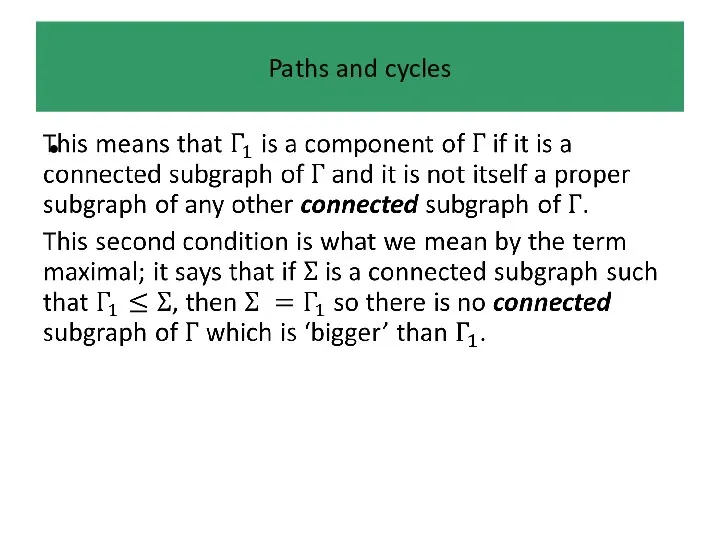

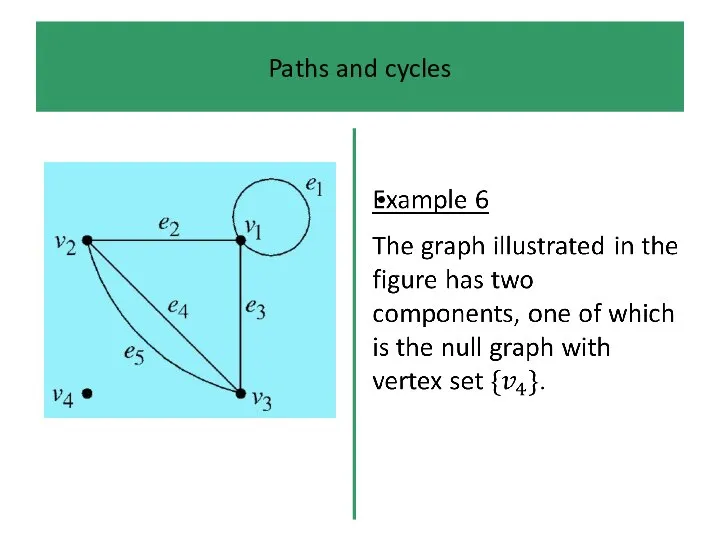
 Безпека роботи з інформацією
Безпека роботи з інформацією Информация о переподключении к веб-сервису
Информация о переподключении к веб-сервису Разработка мобильных сервисов для велотуристов и сети мини/микро бизнесов
Разработка мобильных сервисов для велотуристов и сети мини/микро бизнесов Информационные ресурсы
Информационные ресурсы Гиперссылки на Web-страницах. 11 класс
Гиперссылки на Web-страницах. 11 класс Понятие функции хэширования, дайджест сообщения, свойства необратимости, рассеивания и чувствительности к изменениям
Понятие функции хэширования, дайджест сообщения, свойства необратимости, рассеивания и чувствительности к изменениям Презентация на тему Информационные процессы
Презентация на тему Информационные процессы  Профессиональные дефициты сотрудников НКО как барьеры информационной открытости
Профессиональные дефициты сотрудников НКО как барьеры информационной открытости Библиографическое описание (БО)
Библиографическое описание (БО) Архитектура ВМ. Программирование на ЯВУ. Лекция 3
Архитектура ВМ. Программирование на ЯВУ. Лекция 3 Блочно-иерархический подход к созданию сложных систем
Блочно-иерархический подход к созданию сложных систем Компьютерные вирусы и антивирусные программы. Типы компьютерных вирусов
Компьютерные вирусы и антивирусные программы. Типы компьютерных вирусов Напишите консольную программу
Напишите консольную программу Основы геометрического моделирования
Основы геометрического моделирования Топологии в компьютерных системах
Топологии в компьютерных системах Проектирование и разработка ПО
Проектирование и разработка ПО Системы счисления. Двоичная система счисления
Системы счисления. Двоичная система счисления Ведение отчетной и технической документации
Ведение отчетной и технической документации Объектно-ориентированное программирование
Объектно-ориентированное программирование Разгадай ребусы по информатике
Разгадай ребусы по информатике Space Calendar Randomiser
Space Calendar Randomiser Язык программирования C#
Язык программирования C# Наставничество. Результат работы за 1 полугодие 2020-2021 учебного года
Наставничество. Результат работы за 1 полугодие 2020-2021 учебного года Разработка базы данных учета …
Разработка базы данных учета … Мобильная программа на android
Мобильная программа на android Проект: перевод. Последовательность действий для разработки обработчика событий
Проект: перевод. Последовательность действий для разработки обработчика событий Некоторые понятия, связанные с ЭС и ИИ
Некоторые понятия, связанные с ЭС и ИИ Контрольное тестирование
Контрольное тестирование